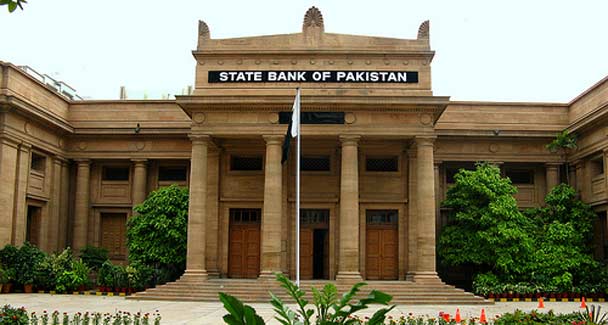KARACHI: State Bank of Pakistan (SBP) is expected to increase 50bps (bps) to 7 per cent in discount rates in the Monetary Policy due to be announced today, market analysts believe.
According to a press release issued on Thursday, SBP Governor Tariq Bajwa will unveil the Monetary Policy Decision at a press conference later today. The press conference will be held at SBP Learning Resource Centre Auditorium, SBP Head Office, I.I. Chundrigar Road, Karachi.
Al-Habib Capital Market Analyst Hasnain Imam anticipates that the SBP Monetary Policy Committee (MPC) may raise its policy rate by 50bps to 7 per cent. The central bank may build the case for this monetary policy stance on rigid high Consumer Price Index (CPI) (NFNE). Meanwhile, broad money (M2) growth slowing due to deteriorating NFAs of the banking system and rising current account deficit (CAD) may induce the central bank to adopt an accommodative monetary policy and tight monetary policy to help manage aggregate demand.
CPI (General) has remained modest at 3.92 per cent during 2017-18 but has begun to show signs of increase since April 2018 wherein it inched up to 3.68 per cent, rising to 4.19 per cent in May 2018 and surging to 5.21 per cent in June 2018 on the back of increase in food & non-alcoholic beverages segment of CPI (General) inflation.
On the contrary analysts believe that CPI’s (NFNE) inflexibility is more worrisome which stood at 7 per cent during both April 2018 and May 2018 inching up to 7.10 per cent in June 2018 despite a 50bps hike in policy rate in May 2018 indicating rising aggregate demand and inflation expectations within the economy stemming from forecasted surge in food and fuel prices due to recent, depreciation of Pak Rupee and increasing prices of domestic petroleum products.
The analyst said Pakistan’s CAD stood at $15.961 billion during eleven months of 2017-18 against $11.140 billion last fiscal year, up by a whopping 43 per cent. Nonetheless, analysts foresee Pakistan’s 2017-18 CAD scaling to $17.5 billion.
This forecasted drop in the country’s foreign exchange reserves is bound to force SBP to maintain a high policy rate in an attempt to manage the current account deficit while supporting government’s plans to mobilise both external and internal flows and anchoring healthy sentiments in the forex and money markets, Imam added.
In a report issued earlier this week, Topline Securities have raised their interest rate forecast and expect a hike of further 200bps in 2nd half 2018, which will take SBP’s policy rate to 8.5 per cent by December 2018.
However, in the upcoming monetary policy announcement, the Topline Securities expects interest rates to increase by 50-100bps.
Moreover, a survey of 21 analysts shows that 10 economists expect target rate to increase by 50bps, nine forecast 100bps hike and two expect a hike of 150bps.
Earlier, the MPC raised the policy rate by 25bps to 6 per cent in January 2018 – this was the first hike since November 2014.
The key factors influencing MPC’s decision in January included, the rupee depreciation of nearly 5 per cent in December 2017, rising international oil prices, monetary tightening by other central banks (particularly the US Fed and Bank of England), with its concomitant impact on rupee interest rate differential, and a possible overheating of the economy as indicated by increased capacity utilisation, SBP 3rd quarterly report said.
The report said that in fact, retail rates moderated slightly during February and March 2018, as banks had ample liquidity at their disposal. This stemmed largely from the banks’ reluctance to roll over the bulk of maturing government securities in a perceived rising interest rate scenario. In turn, this liquidity comfort nudged the overnight rates below the policy rate during Q3-FY18.
SBP’s report also states that with the cost of bank financing continuing to be attractive, demand for credit from the private sector remained strong. Furthermore, steady economic activity appeared to help maintain the growth in fixed investment loans, as both manufacturing and non-manufacturing firms (largely cement and textile) borrowed for the long term. As far as working capital loans are concerned, the sugar sector’s borrowing was most notable during Q3-FY18, with the crushing season in full swing.
It is pertinent to mention that the central bank has pushed up its policy rate by a cumulative 75bps since January 2018.




